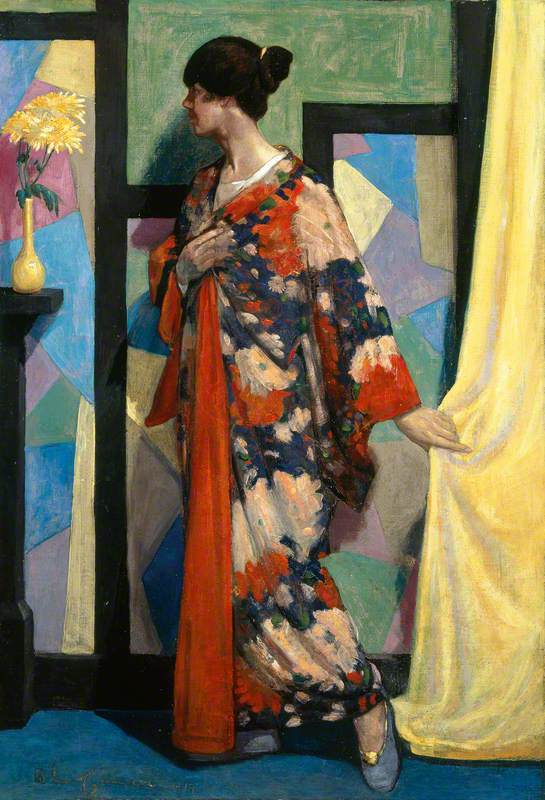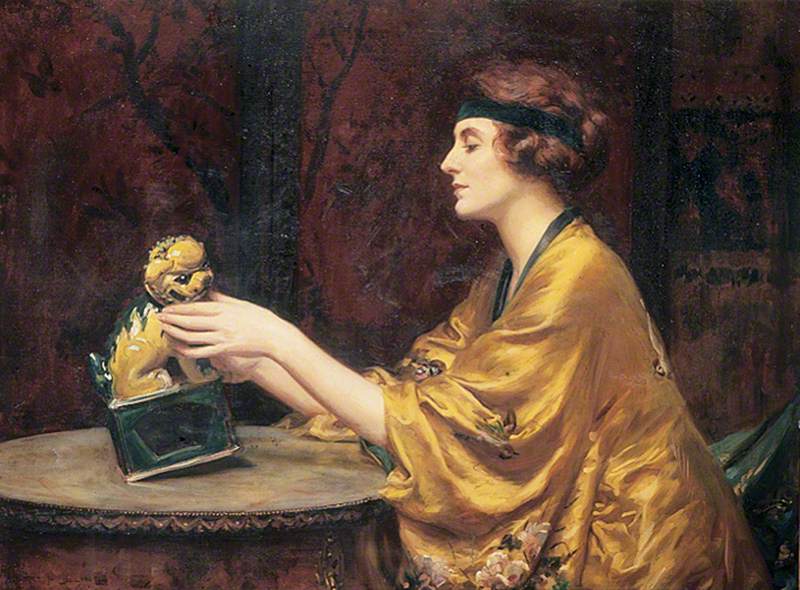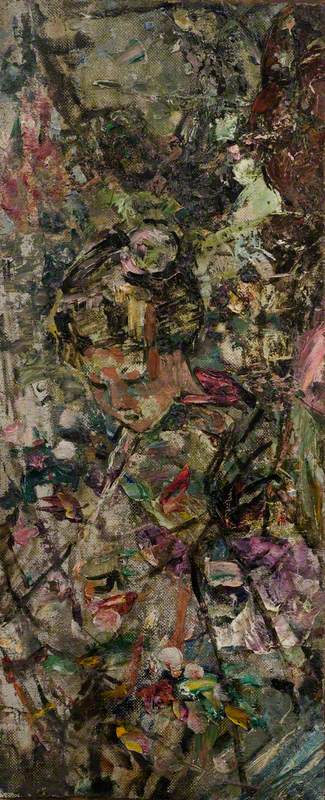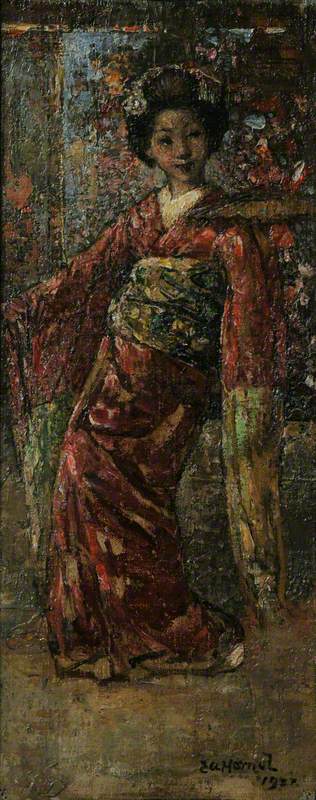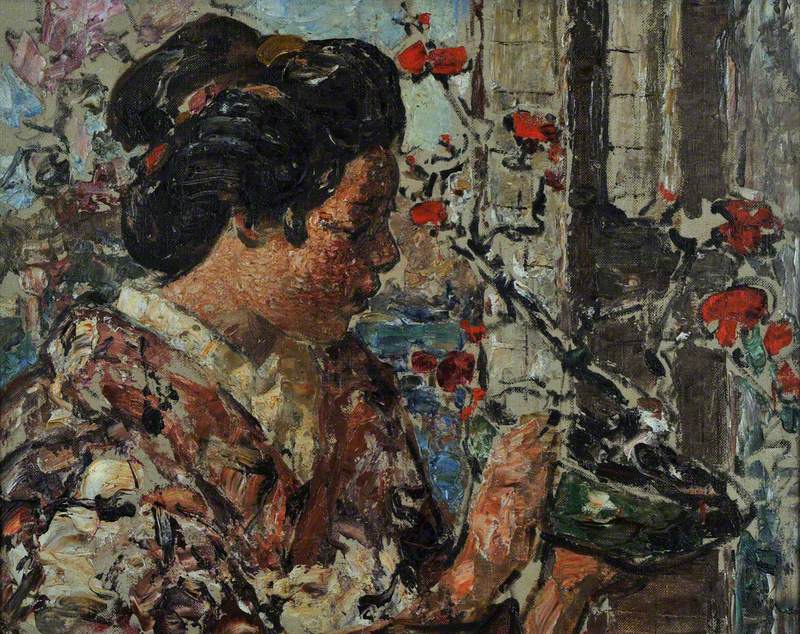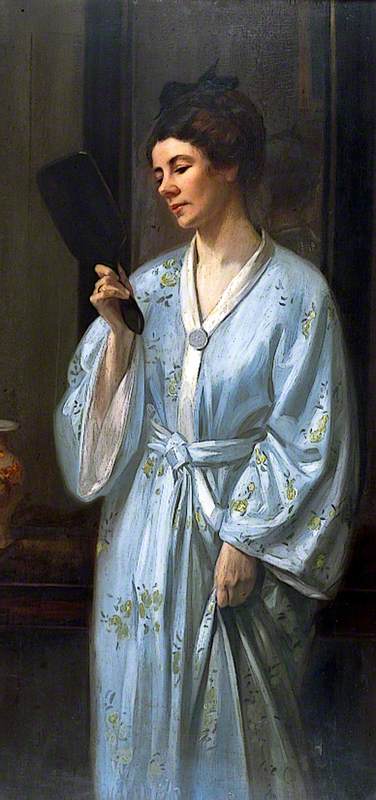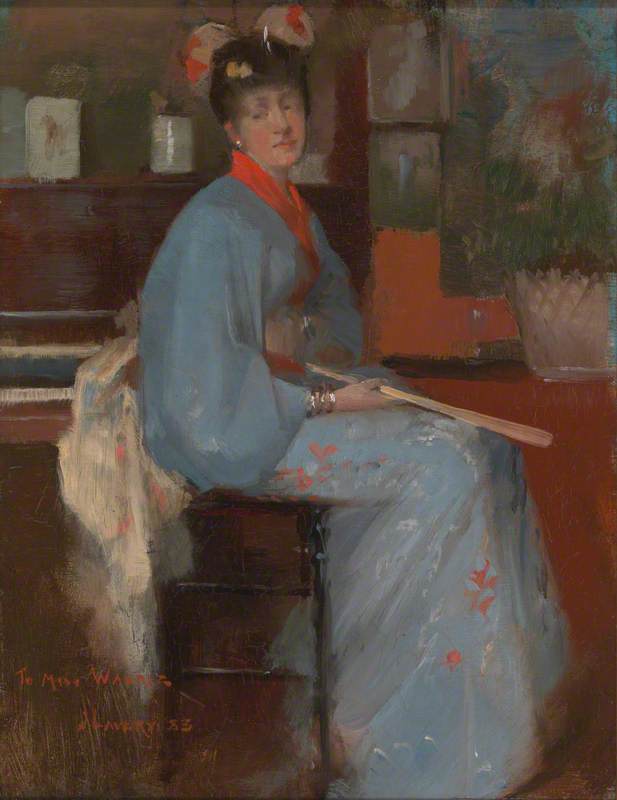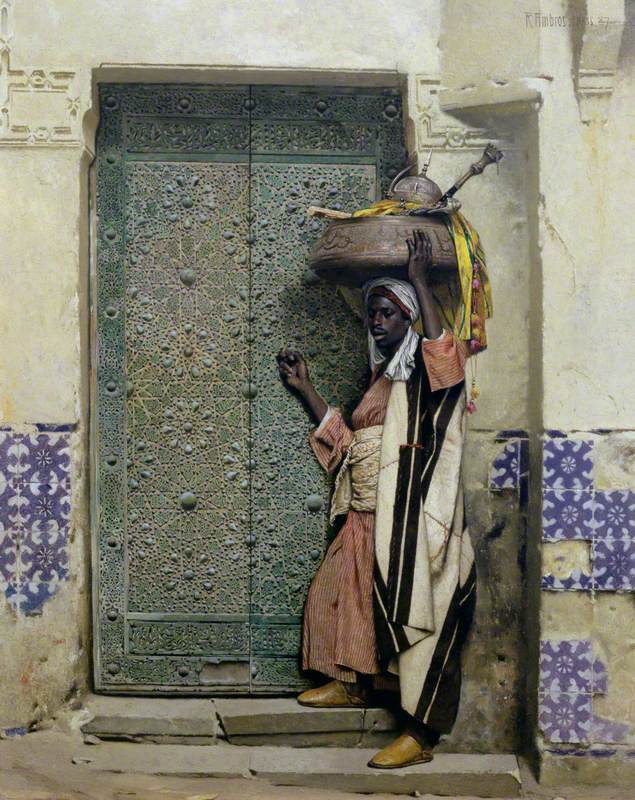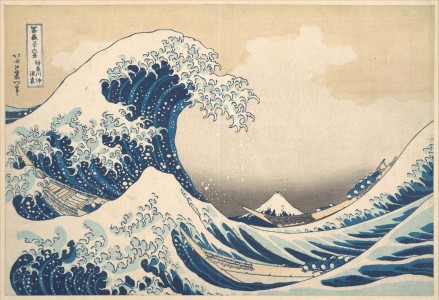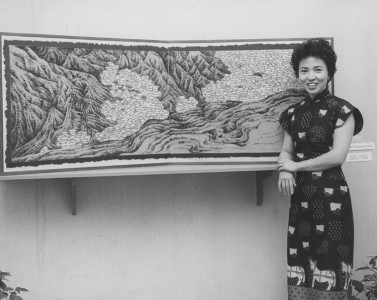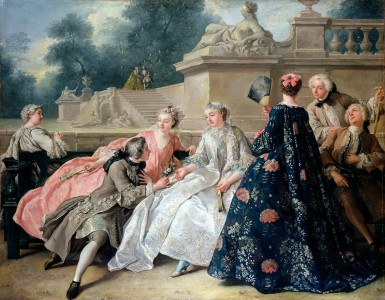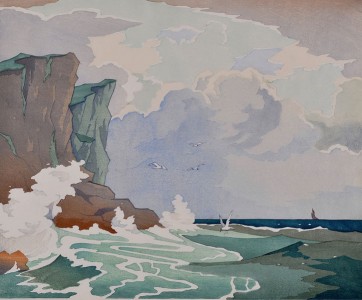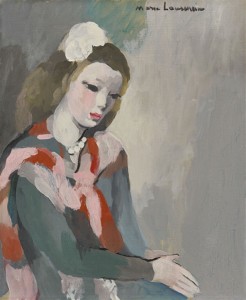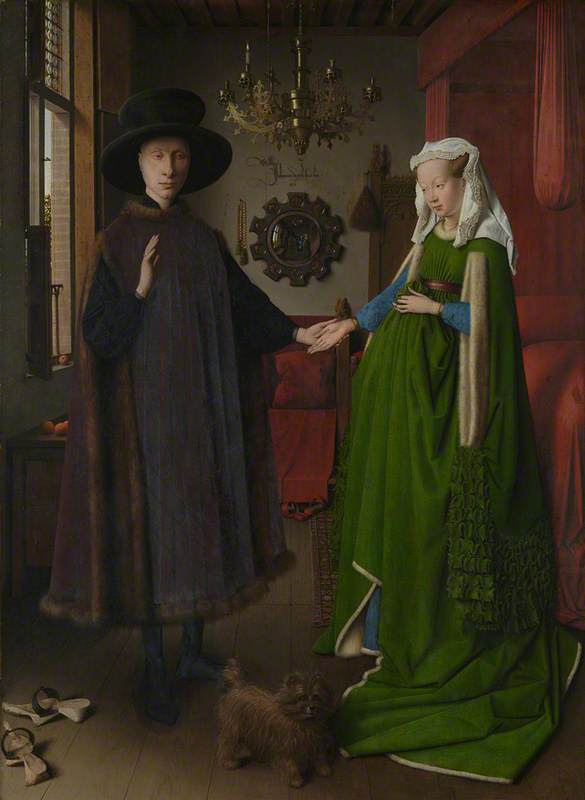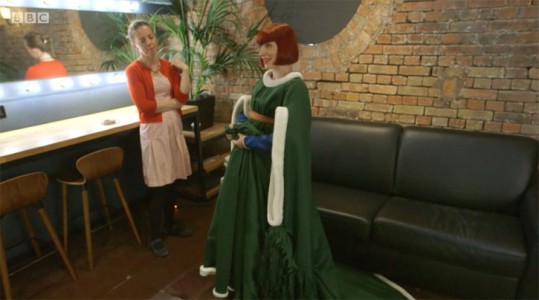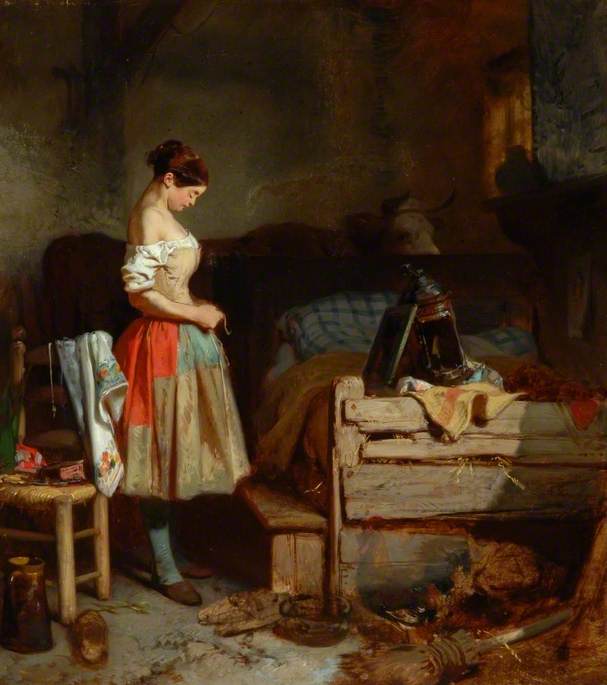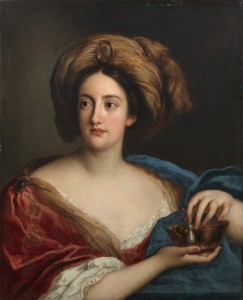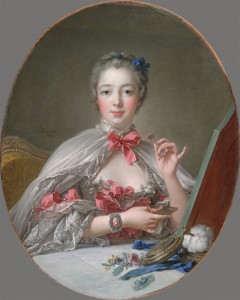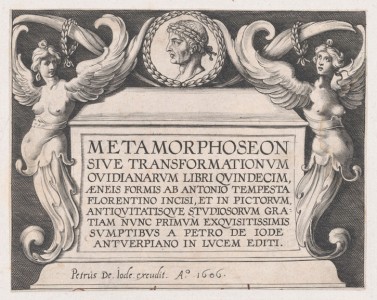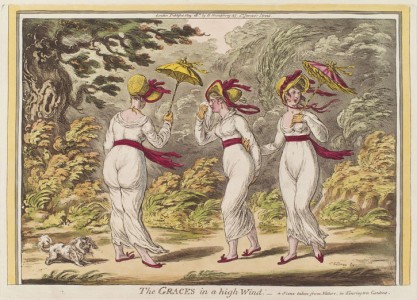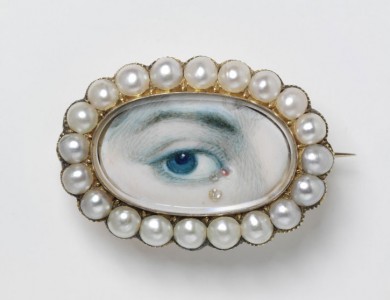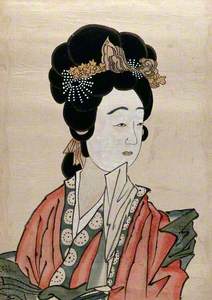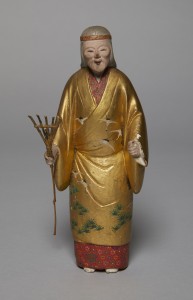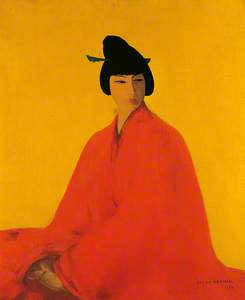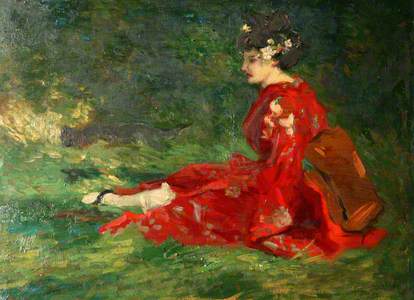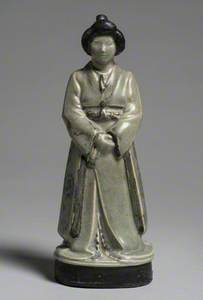One of Japan's most famous exports – the kimono – is a widely adored fashion garment symbolising Japanese identity and culture.
Although the kimono has existed for centuries, it came into popularity during the Edo period (1603–1868), when it was first called the 'kosode' (meaning 'small sleeves'). It later evolved into the 'kimono' (meaning 'the thing to wear') during the Meiji period (1868–1912).
The Blue Kimono
1898, oil on canvas by William Merritt Chase (1849–1916) 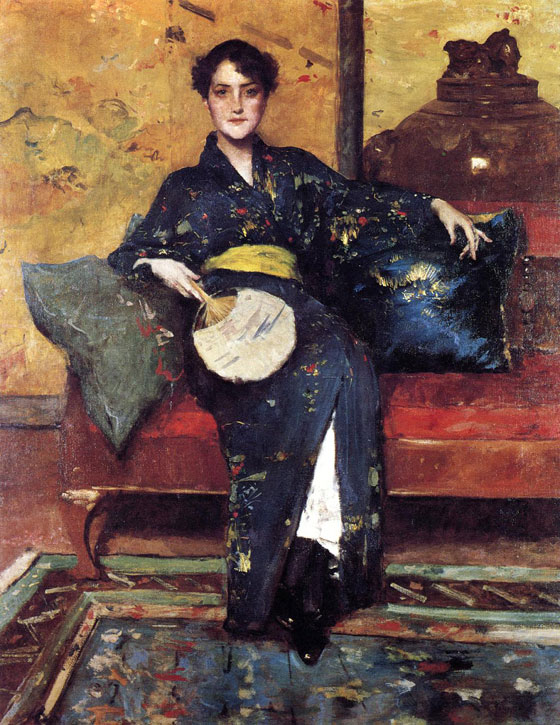
By the eighteenth century, the Dutch East India Company had brought the garment back to Europe, where affluent and fashionable sitters had their portrait painted wearing a kimono, like the woman above painted by William Merritt Chase.
Such rare and astonishing portraits can be seen in the V&A's latest show 'Kimono: Kyoto to Catwalk' (until 21st June 2020), which reveals the enduring impact of the kimono from the seventeenth-century portraiture to today's haute couture fashion.
I spoke to the V&A curator, Anna Jackson, to understand how the kimono infiltrated (and was appropriated by) European visual culture.
When we think about the kimono, it is easy to relegate the beautifully adorned garment to the realm of fashion. Yet at the heart of the V&A exhibition is a desire to change western perspectives and museum traditions, which have often divided fashion and fine art into separate categories.
'Unlike what we have in the west, there isn't a divide in Japan between fine art and decorative art. They painted on a kimono and designed on a kimono – it was like a canvas that one could wear.'
For this reason, Jackson curated the show by displaying the kimonos on mannequins and models rather than simply using traditional display cases.
'If you look historically at how kimonos are exhibited in museums, including in the V&A, they are always displayed on a T-bar structure, as this allowed viewers to see the detail on the kimono's surface – the patterning, the colour, the design. But the danger of displaying the kimono in this way means you only see it as a work of art rather than as a piece of clothing.'
Geisha Walking through the Snow at Night
c.1797, polychrome woodblock print, ink & colour on paper by Kitagawa Utamaro (c.1754–1806) 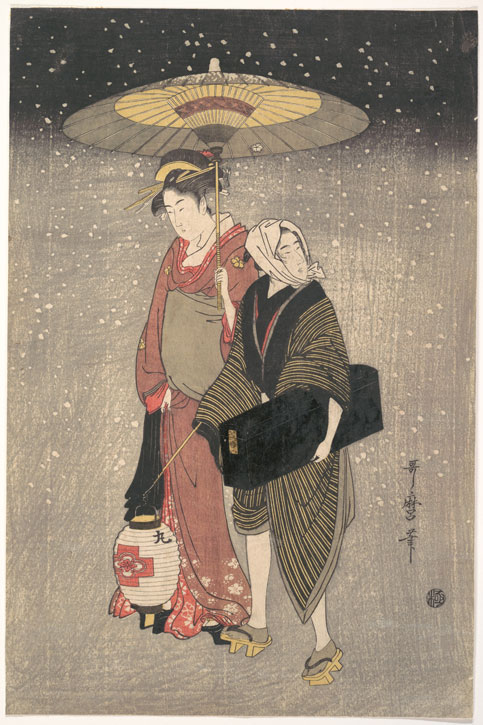
It is generally believed that the kimono first came into existence during the Heian period (794–1192), though it was really in 'the sixteenth century when it became the principal item worn by everybody, rich or poor, man or woman.'
As the demand for kimonos grew greater, designers developed their unique, virtuoso craft. Over time, they became highly treasured family heirlooms, passed down to each generation.
Fashionable brocade patterns of the Imperial Palace
1847–1852, woodblock print by Utagawa Kunisada (1786–1865) 
'What you find in Japan by the mid-seventeenth century is the start of a 'fashion culture', and the genre of woodblock printing really helped that culture to flourish.'
The kimono craze was accompanied and boosted by the emergence of 'pattern books', which Jackson explains were, 'books that show the outline of the kimono with indications of the pattern, colour and style. These were produced in thousands like we read magazines today, and they allowed people from all over Japan to choose the kimono design they wanted. It was a way of disseminating and communicating new fashion and designs for the kimono.'
The Earring
c.1893, oil on canvas by George Hendrik Breitner (1857–1923) 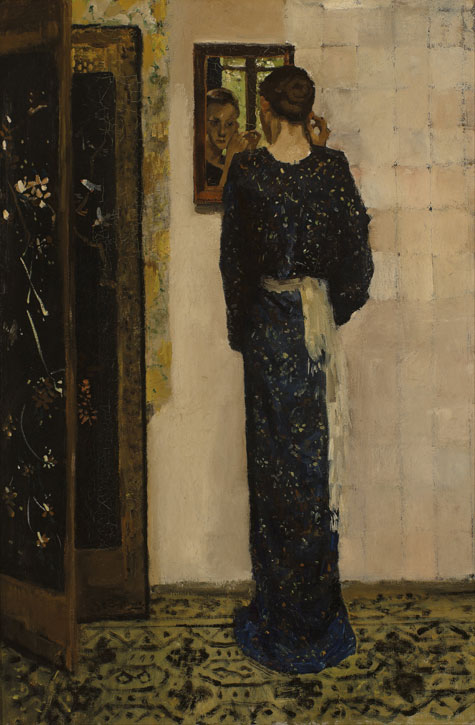
'Kimonos were a very important part of what we'd call 'the floating world' – a world of pleasure, entertainment, and drama that existed in Japan from the seventeenth century through to the late nineteenth century. Fashionable dress was very important. The people who led taste were the Kabuki actors and the courtesans – they became known for wearing a kimono with a particular shade or design.'
'Woodblock prints showing those Kabuki actors or courtesans wearing such designs helped perpetuate that popularity for fashionable kimonos – everybody would rush out and try to buy something similar.'
In a world of increasing prosperity, the kimono signified Japan's booming retail and print economy and celebrity culture.
From the mid-seventeenth century onwards, Japan controlled foreign relations very carefully. The only westerners they traded with were the Dutch, meaning employees of the Dutch East India Company were able to take the kimono back to the west.
'There was instantly a craze for the kimono in the Netherlands, so the Dutch got the Japanese to make more kimonos in particular styles that satisfied the tastes and demands of Europeans.'
In the Netherlands, they became known as 'Japanese robes', in Britain they were described as 'nightgowns', although they weren't worn in bed but used as informal garments at home.'
The kimono became 'the epitome of fashionable dress, which is why Europeans began to be painted in kimonos from the seventeenth century onwards.'
But it was in the nineteenth century, when Japan opened its ports to international trade, that the kimono really took off in European fashion. 'Kimonos were brought over en masse to Europe, America, New Zealand – often stylish women were depicted in such garments.'
The kimono also appeased the intellectual and aesthetic movements of Orientalism and Japonisme that emerged in the nineteenth century, when Japan and its culture problematically represented an 'exotic other' to Europeans.
But for European painters specifically, the intricate detail and embroidery of the kimono 'allowed artists to show off their skill.'
Although the kimono could be seen ubiquitously in nineteenth- and twentieth-century fashions, many Europeans still knew little about Japan or its culture. 'Certainly, in the nineteenth century, Japan was viewed with romantic longing, as an exotic faraway place, and people in the west saw themselves as superior.'
Kaidan (Staircase)
1935, hanging scroll, ink & colour on paper by Kobayakawa Kiyoshi (1899–1948) 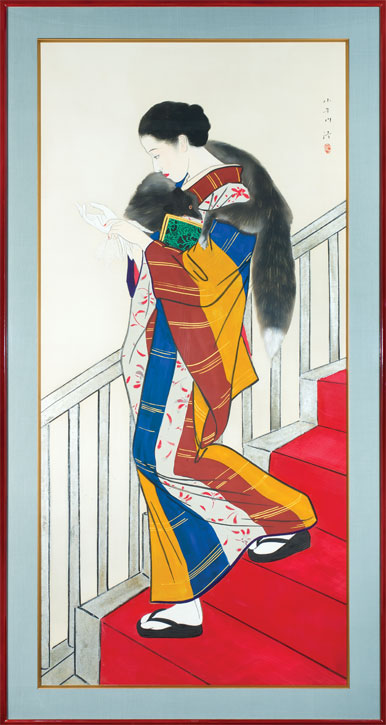
'We need to overcome people's perception of the kimono as a traditional, unchanging costume – a view that is really a product of the post-war era. After the Second World War, it looked like the kimono was dying out, as Japanese people started to wear western, simple clothing. As a result, the kimono became a symbol of traditional Japan, and a codified garment.' Younger generations especially began to view it as a 'restrictive garment, attached to an old-fashioned, conservative form of femininity.'
Only in recent years has the kimono experienced a resurgence of interest in the world of fashion. 'When I was in Japan in the 1990s, I'd rarely ever see anyone wearing a kimono,' says Jackson.
Thanks to its popularity among young fashion designers and exhibitions like the V&A's, 'the garment is now experiencing a renaissance'.
Lydia Figes, Content Editor at Art UK
The exhibition 'Kimono: Kyoto to Catwalk' is on display at the Victoria and Albert Museum, London, from 29th February to 21st June 2020
